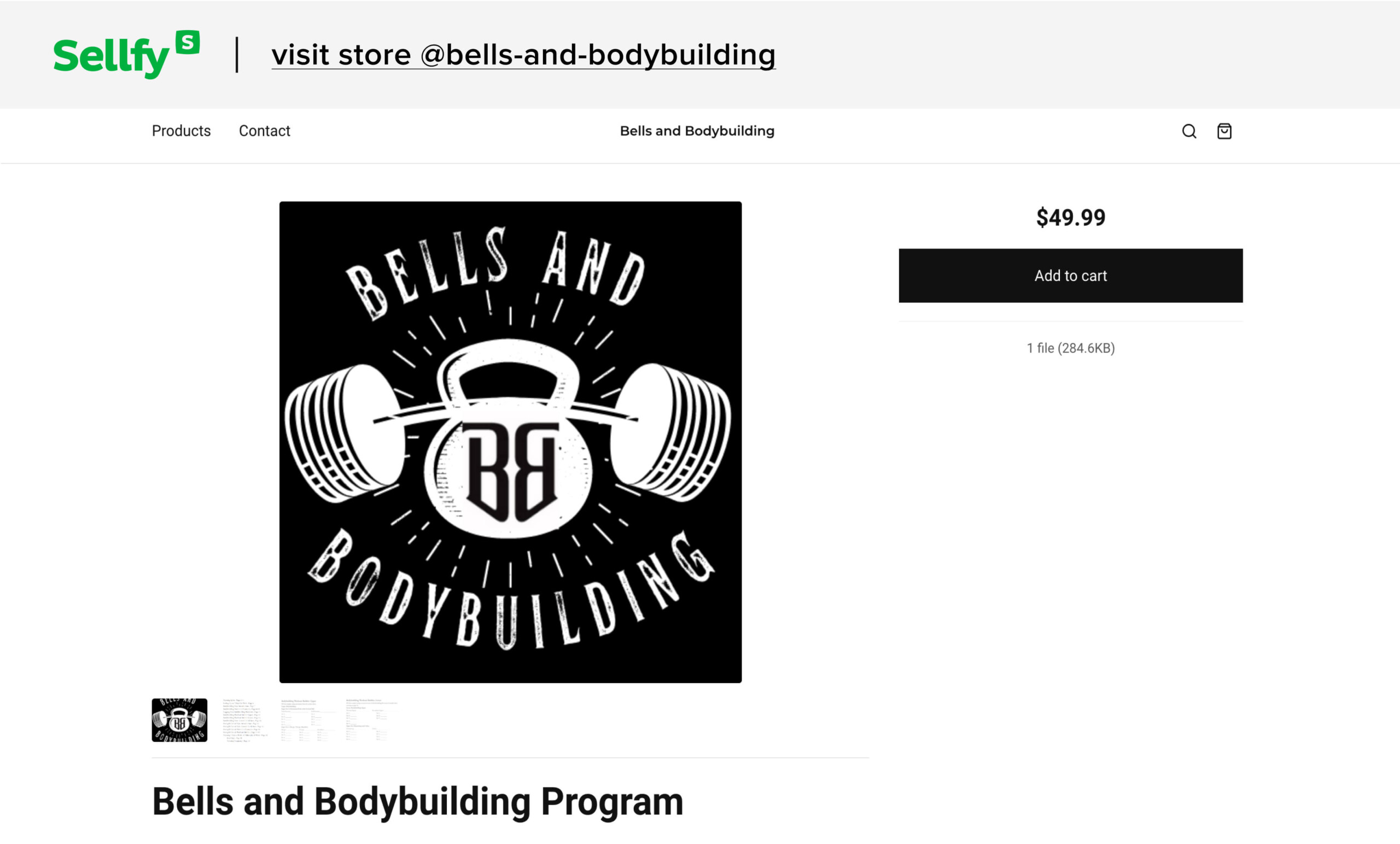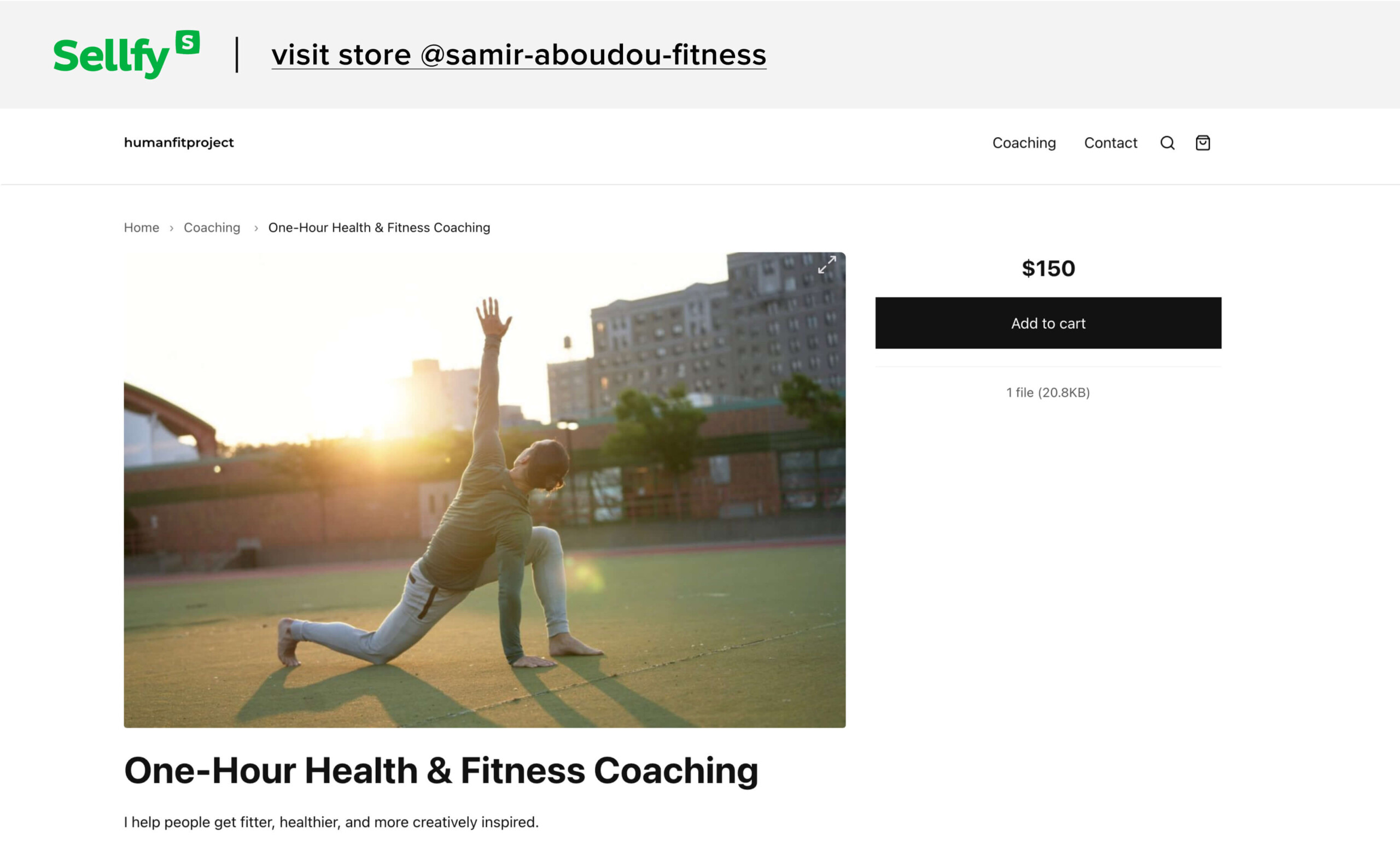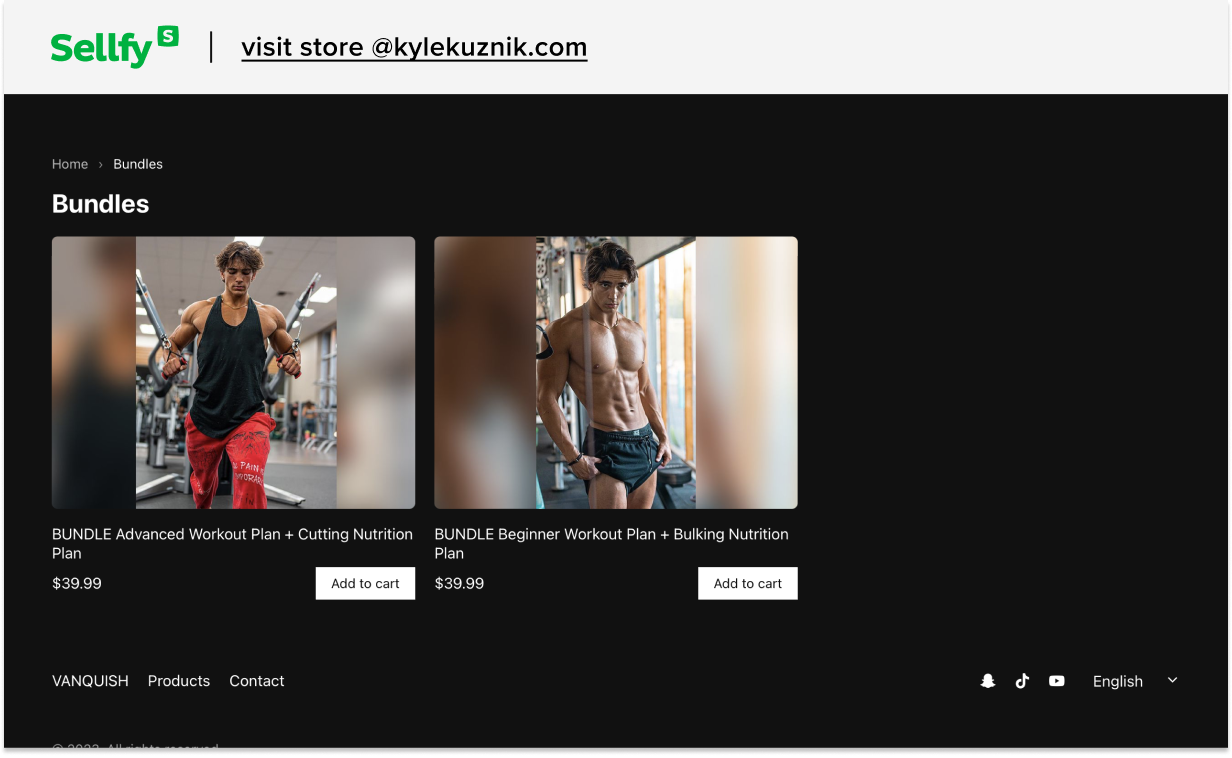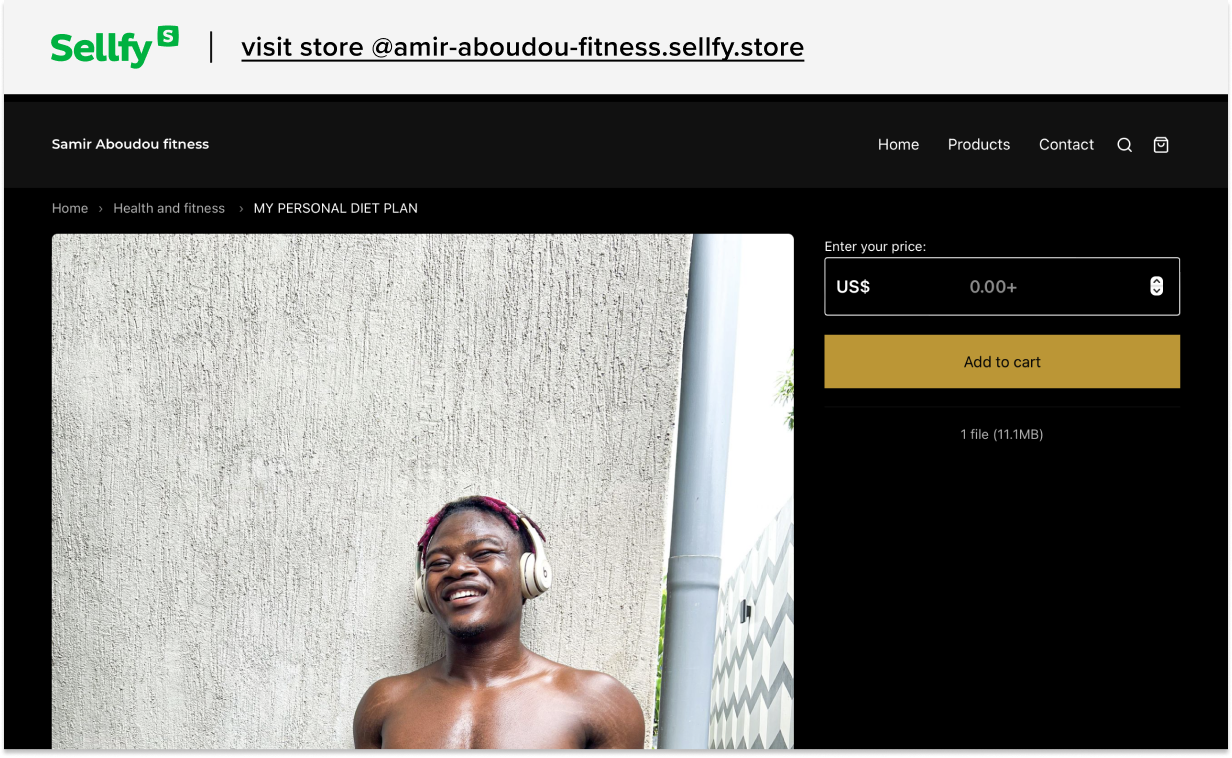You’re undercharging your workout plans (try this pricing strategy instead)

The workout plan market is absolutely huge.
While the demand is excellent for anyone trying to sell workout plans, it brings the challenge of increased competition, as thousands of other fitness creators offer unique fitness plans.
Although this is a challenge, this tough market of competition can trick many into undercharging for their workout plan products. There’s a good chance you are, too.
That just leaves one question: how much to charge for a workout plan?
Pricing your digital products, especially workout plans, can be difficult. Luckily, this article will illuminate the best path to perfect workout pricing, including why you might be undercharging, how it affects your business, and what to change.
Signs that you might be undercharging your workout plans
While it can be hard to tell if you’re undercharging for your workout plans, there are a few telltale signs to look out for.
High turnover
The first sign is high turnover without hitting financial milestones. Typically, selling large volumes of your product should be something to celebrate.
If instead, it feels like barely enough, it’s highly likely you are undercharging for your workout plans. Complete a cost calculation, and try to find out how many plans you need to sell to break even.
Money stretched thin
Like any other business, selling your workout plans should give you enough money to cover all costs, including product creation and other overhead expenses, as well as leaving some profit at the end.
If you are selling a good number of workout plans, but still struggling to make a profit or even cover costs, undercharging might be the main issue.
Demand exceeds effort
Every workout plan is different, and one factor that should influence pricing is the effort required to create your product.
If you have high demand but struggle to keep up, there’s a good chance you’re providing more value than you’re charging for.
The consequences of undercharging
The first problem with undercharging for your workout plans is the lost revenue.
Yet alongside this, another consequence of undercharging is that it affects the perceived value of your product. If you price your product too low — way below other similar products, potential clients and customers are likely to assume something is wrong.
Because of this, you may also see issues with client retention and satisfaction, as you are so busy dealing with high demand, that you may struggle to keep up with current orders.
Factors influencing workout plan pricing
Several factors influence workout plan pricing, including market demand and competition, your own experience and credentials, and the costs of any additional services.
Let’s take a more detailed look at each, to see how and why they might influence your pricing strategy.
Your experience and qualifications
Any certifications, unique skill sets, and levels of experience you have that are relevant to your specific workout plan will help determine just how much you can charge.
Unsurprisingly, the more experience you have, alongside any advanced certifications, often allows you to charge more for your workout plans. This is because the pricing of your workout plan is essentially a valuation of your knowledge and expertise in that field.
The more knowledge and expertise you are sharing with customers, drawn from years of experience or qualifications obtained, the more you can reasonably charge.
Market demand and competition
No matter how experienced you are, market demand often has the final say. You may be extremely experienced and well-qualified, but if people provide a hundred other workout plans with the same qualifications, overall prices will be more competitive.
Of course, your workout plan offering is unique, and simply copying or undercutting other people’s prices isn’t the right course of action. It can, however, help guide you.
You’ll need to take into account how your workout plan compares in value to competitor offerings, and then determine how much more, or less, you should charge than said competitors.
Cost of additional services or tools provided
Workout plans often aren’t a one-and-done deal – if your workout plan includes additional resources such as video demonstrations, nutrition guides, or other bonuses, these should be factored into the price.

Effective pricing strategies for workout plans
When you price your workout plans, there are several different pricing strategies open to you:
- Tiered pricing: You can offer various price levels, each providing different amounts of content, resources, and extra support.
- Package deals: Consider creating discounted bundles that include a grouping of different workout plans or services.
- One-on-one coaching: Similar to traditional fitness coaching, you can charge one-time payments or recurring fees. You can do this by providing singular or regular one-to-one coaching and personalized support, either in-person or digitally.
- Freemium and pay-what-you-want: You could also operate via a donation system, allowing clients to choose how much they pay. While some will pay less, wealthier clients can leave higher donations.
While knowing what options are available is a great first step, you’ll want to know in-depth how these compare.
Let’s take a look at some examples.
Examples of workout plan pricing
Tiered pricing
Using tiered pricing is a great way of servicing all corners of the market. After all, not everyone wants to pay the same price.
You can offer various levels of services at appropriate price points. This allows customers looking for a quick, cheap option to choose a workout plan from you, while still offering more advanced and comprehensive workout plan services to those who want more.
Just take a look at Bells and Bodybuilding to see how tiered pricing can pay off. Using their Sellfy store, Bells and Bodybuilding offers a range of workout plans with different resources and lengths, ranging from $19.99 to $59.99.
This allows people with a lower budget to purchase a cheaper, shorter workout plan, while still catering to those who are looking for longer, more in-depth workout plans.

4-week workout plan
Starting at the lower end, these shorter plans can typically cost between $30 and $60, however, you may want to adjust this price depending on how many additional resources you offer.
6-week workout plan
A good price point for a 6-week workout plan can be anywhere between $50 and $90, as you’ll likely be offering more complex and comprehensive workout plans, along with additional support.
12-week workout plan
Often the longest workout plan offered, a 12-week workout plan really has no limit in terms of pricing.
More standard 12-week plans can often cost between $80 and $150, however through offering more tailored and comprehensive plans filled with resources, you could offer much higher.
An excellent example of this is fitness coach HumanFitProject, who offers a 12-week workout plan costing $900. When you look into what is being offered, you’ll see exactly why this costs so much, as it includes tons of additional resources, one-to-one coaching, and more flexible support.

One-on-one coaching
One-on-one coaching is a more time-consuming product than reproducible workout plans, so it can often be priced much higher. This allows you to provide clients with more tailored and personal support, which is precisely why they’re willing to pay more.
Pricing this service will rely heavily on your own experience and credentials, as the more authority you have in your chosen expertise, the more you can reasonably charge.
A good range to aim for is $60 to $200 for a single-hour session, though you can vary this even more to match your experience level.
Once again, HumanFitProject shows us how it’s done, providing a comprehensive one-hour session for $150 and sharing his two decades of knowledge and research. You can also offer more regular one-on-one coaching for a month in a package deal.

Bundled offers
Whether it’s for workout plans, one-on-one sessions, or a mix of both, offering bundles or package deals can be an excellent pricing strategy to gain sales and long-term customers.
By combining multiple services or plans into one bundle at a discounted rate, you can encourage current clients and new visitors to commit to longer-term coaching programs, enticing them in with potential long-term savings.
This is done brilliantly by Sellfy seller Kyle Kuznik, who offers various bundles on his Sellfy store.
Combining nutrition and workout plans into discounted bundles, Kyle offers great value deals to those who want both while enticing customers who may not have paid separately to buy the discounted bundle.

Freemium and pay-what-you-want pricing models
The freemium model is often a great way to start selling bundles. It allows you to build up a client list, following, and case studies of success while still earning some money through donations.
Look no further than fitness influencer Samir Aboudou for an example of the Freemium model done perfectly.
The first thing you see on his Sellfy store is a free personal diet plan, followed by Samir himself. This builds customer trust and goodwill while allowing for voluntary donations. Alongside this, Samir offers a variety of paid workout plans, which visitors are more likely to trust and purchase after trying out his free nutrition plan.

When and how to increase your prices
If you’ve already established a workout plan business, it can be hard to time and justify price increases. You want to make a vital change to increase profits and attract new clients without annoying current customers.
Luckily, there are a few excellent strategies for a successful price change.
Identifying the right time for a price increase
The first step is identifying the right time to implement a price increase. Even if you’ve only just realized you may have to rework your workout prices, you’ll want to find and communicate a clear reason for the change to your customers.
Here are some of the most common reasons:
- Certification acquired: Gaining a new certification or accolade is a great reason to increase prices and justifies your higher rates with a verifiable increase in reliability and value
- Positive client feedback: If your customers think you undercharge, it’s definitely time to change! When overwhelming client feedback proclaims your excellent value, this may be a good opportunity to rework your pricing.
- Surging demand: If you start to suffocate under a wave of increased demand, it may be time to increase your prices. Overwhelming demand demonstrates your value, and is a good indication that you can afford to charge more.
- Inflation: One of the less exciting reasons is that inflation affects us all. Depending on national and global rates, rising inflation may mean money isn’t worth as much, meaning you need to charge more to get the same.
Communicating changes to clients
Picking the right time is essential, but communicating your price change to existing clients is just as vital.
Make sure everyone, from single-time buyers to those on longer plans is aware of the price changes. Just as crucially, ensure you convey why the price change is occurring, explaining that value has been added, or inflationary costs have forced a change.
Gradually implementing price adjustments
Whatever your reason for increasing prices, try not to make too big a jump. A good guide is to only raise prices by 5 or 10% each year as a maximum, as anything higher may be too significant a change for many of your existing clients.
The aim should be to increase prices while maintaining large numbers of current customers, so aim for a gradual, gentle change.
Within this, give your customers plenty of warning ahead of time, so your price change doesn’t come as a shock the next time they visit your store to purchase something.
Conclusion
Depending on what kind of workout plan you are selling, there are various different pricing levels you should aim for.
For single-sale pricing models, you should aim for:
- 4-week plan: $30 to $60
- 6-week plan: $50 to $90
- 12-week plan: $80 to $150+
For one-on-one coaching, it is common to charge anywhere between $60 and $200, depending on your experience and credentials. Remember also to consider any additional features or resources you may offer, as these can warrant a higher overall price.
No matter what you choose, make sure to review and reconsider your pricing as the market changes regularly and you grow in your expertise and experience.
FAQ
How do you sell workout programs?
The key to success in selling workout programs effectively is creating high-quality, impactful plans that are tailored to your target audience.
Do your research before creating them, and make sure you have something packed with value. With the product ready, the next step is to use an intuitive online store such as Sellfy that allows for quick and effective marketing and distribution.
Can I make money selling workout plans online?
Yes, with surprising ease.
So long as you have the right expertise, you can make a surprising amount of money by selling workout plans online. All you need is a good background in fitness or sports, and a dedicated mindset to creating valuable and unique content.
It can take some time to get the ball rolling, but once you’ve built your business, there’s a lot of money to make. Also, make sure to check out more ways to make money as an athlete.
What is a good 4-week workout plan price?
A reasonable 4-week workout plan price really depends on you, but a good range to aim for is $30 to $60. If you’re unsure, look at relevant competitor pricing and evaluate how much value they offer compared to your workout plan.
You can consider charging higher prices if you offer a lot more value.
How much should I charge for online fitness coaching?
Much like workout plans, online fitness coaching pricing depends entirely on what you are offering.
You can reasonably charge a lot if you have decades of accredited experience and offer a tailored, hands-on coaching course. Less complex plans should charge less.
As a good base, aim for $100 to $300 per month if you have a few years of expertise, and offer a couple of regular check-ins each month.






